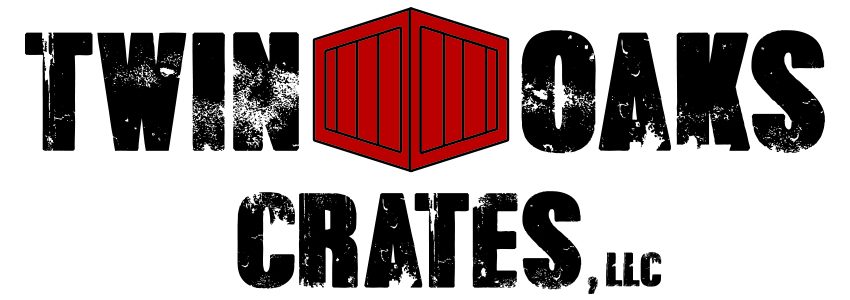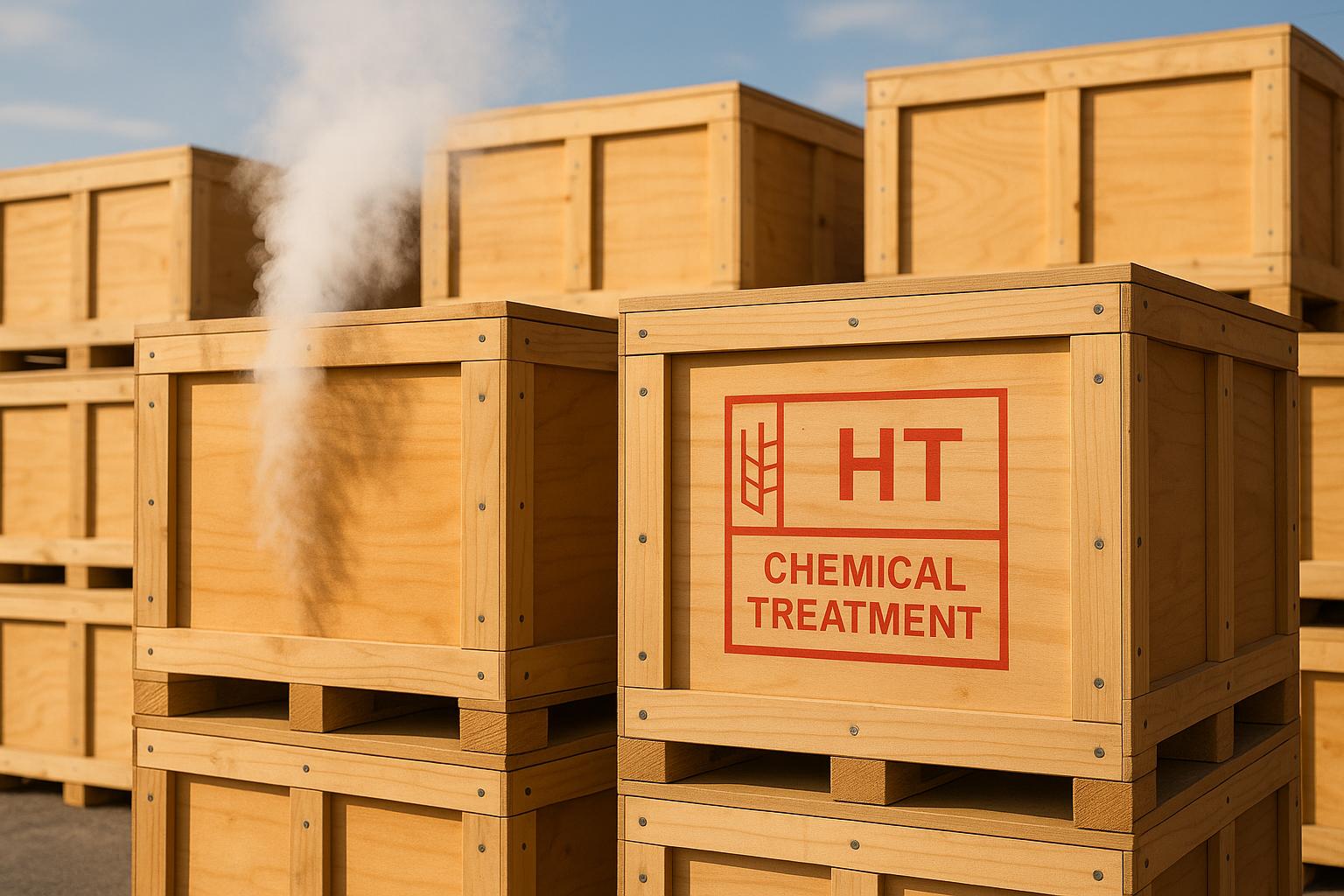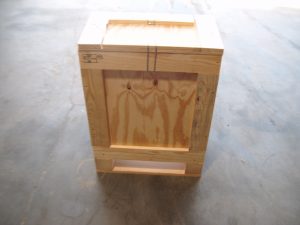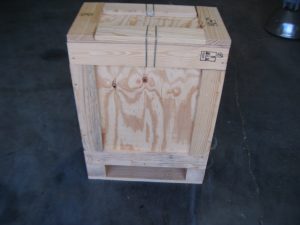When shipping wooden crates internationally, compliance with ISPM 15 standards is mandatory to prevent the spread of pests. Two primary methods – heat treatment and chemical treatment – are used to meet these requirements. Here’s a quick breakdown of both:
- Heat Treatment: Involves heating wood to at least 56°C (132.8°F) for 30 minutes. It’s chemical-free, safer for sensitive goods, and aligns with stricter regulations in some countries. However, it requires specialized equipment and can be costlier upfront.
- Chemical Treatment: Uses methyl bromide fumigation to kill pests. It’s faster and often cheaper initially, but raises environmental concerns and is restricted in certain regions.
Quick Comparison
| Factor | Heat Treatment | Chemical Treatment |
|---|---|---|
| Process | Wood heated to 56°C for 30 minutes | Fumigated with methyl bromide |
| Chemical Use | None | Yes |
| Speed | Slower | Faster |
| Cost | Higher upfront | Lower upfront |
| Global Acceptance | Widely accepted | Restricted in some countries |
Choosing the Right Option: Heat treatment is ideal for industries prioritizing chemical-free solutions, such as food, pharmaceuticals, and electronics. Chemical treatment may suit businesses needing faster, lower-cost solutions for non-restricted destinations. Always consider destination regulations, product sensitivity, and long-term costs when deciding.
Become an Expert: Heat Treating for Export
Heat Treatment for Wooden Crates
Heat treatment is a process that uses heat to eliminate pests in wooden crates, all without relying on chemicals. This method ensures the crates remain functional while meeting international standards.
How Heat Treatment Works
The process begins by removing the bark from the wood to eliminate potential pest habitats. Next, the wood is heated until its core temperature reaches 56°C (132.8°F) and is held at that level for at least 30 minutes. This is done using specialized, monitored equipment to comply with ISPM 15 standards, ensuring pests are effectively eradicated.
Facilities performing heat treatment must be certified by the National Plant Protection Organization (NPPO) or another authorized organization. To obtain the official ISPM 15 stamp, these facilities undergo audits conducted by services accredited by the USDA Animal and Plant Health Inspection Service.
Benefits of Heat Treatment
One of the standout advantages of heat treatment is that it avoids the use of chemicals. This makes it a safer option for shipping sensitive goods like food, pharmaceuticals, or organic products. Additionally, heat treatment helps maintain the structural integrity of wooden crates, extending their lifespan and reducing the need for frequent replacements. By steering clear of chemical treatments, this method also aligns with efforts to minimize environmental impact.
Heat Treatment Drawbacks
Despite its benefits, heat treatment comes with challenges. It often involves higher upfront costs, requires specialized equipment, and takes more time compared to chemical fumigation. These factors can lead to delays, especially for shipments on tight schedules. In rare cases, some pests may survive the standard treatment, necessitating higher temperatures or customized approaches.
However, working with certified suppliers can help mitigate these challenges. Many offer bulk discounts and provide thorough certification, making the process more efficient and cost-effective.
Chemical Treatment for Wooden Crates
Chemical treatment provides an alternative way to eliminate pests in wooden crates while meeting ISPM 15 standards. This method is particularly appealing when speed and cost are top priorities.
How Chemical Treatment Works
The process typically involves fumigation, where wooden crates are exposed to controlled levels of chemical agents to eradicate pests. Compared to heat treatment, fumigation is much quicker and is often chosen for shipments requiring fast turnaround times.
Advantages of Chemical Treatment
Chemical treatment stands out for its speed and affordability. It can be completed more quickly than heat treatment, making it a practical choice for urgent shipments. Additionally, the upfront cost of chemically treated crates is often lower, which can be advantageous for short-term shipping needs. Most importantly, this method complies with ISPM 15 standards and is widely accepted in many countries.
Challenges of Chemical Treatment
Despite its efficiency and cost benefits, chemical treatment faces criticism due to environmental concerns. As a result, many are leaning toward more eco-conscious methods. In the next section, we’ll take a closer look at how chemical and heat treatments compare, weighing their pros and cons.
sbb-itb-1c2a65d
Heat Treatment vs Chemical Treatment Comparison
This section takes a closer look at two methods for pest elimination: heat treatment, which uses high temperatures, and chemical treatment, which relies on methyl bromide fumigation. While both meet ISPM 15 standards, they differ in aspects like cost, speed, and their impact on the environment.
Treatment Comparison Table
| Factor | Heat Treatment | Chemical Treatment |
|---|---|---|
| Process | Wood is heated to 56°C (133°F) for at least 30 minutes to eliminate pests | Uses methyl bromide fumigation to control pests |
| Chemical Use | No chemicals involved, making it environmentally friendly | Relies on methyl bromide, a chemical fumigant |
The table highlights the core processes of each method. Below, we dive into their differences and the considerations involved.
Main Differences and Trade-Offs
The key difference between these two approaches lies in their method of pest control. Heat treatment eliminates pests by raising the temperature of the wood, avoiding the use of chemicals entirely. This makes it a cleaner option for industries that prioritize environmentally conscious practices or require chemical-free solutions.
On the other hand, chemical treatment uses methyl bromide fumigation, a process also recognized under ISPM 15. While effective, it introduces a chemical element into pest management, which may not align with every industry’s needs or environmental goals.
Choosing the right method depends on your operational priorities, such as environmental considerations, regulatory compliance, and specific industry requirements.
Selecting the Right Treatment Method
Choosing the best treatment method depends on several factors: shipping requirements, regulations, costs, turnaround time, and environmental considerations.
Treatment Selection Factors
There are several key factors to keep in mind when deciding on a treatment method:
- Destination Requirements: The destination country’s regulations are the most important consideration. While most countries accept both ISPM 15-compliant methods, some restrict methyl bromide due to its environmental impact. In these cases, heat treatment becomes the safer and more sustainable choice for international shipping.
- Environmental Priorities: Companies with a focus on sustainability often lean toward heat treatment. This chemical-free process aligns with green logistics goals and avoids concerns about chemical residues on packaging materials.
- Timeline Considerations: For time-sensitive shipments, heat treatment can be a faster option when facilities are properly equipped to handle urgent requests.
- Cost Factors: Costs can vary greatly depending on location, shipment volume, and facility availability. Heat treatment may involve higher upfront facility costs but offers lower ongoing operational expenses. On the other hand, chemical treatment typically has lower initial costs but requires continuous chemical purchases and specialized handling.
- Cargo Sensitivity: Products that require a chemical-free environment – such as electronics or medical equipment – are better suited to heat-treated packaging. It’s worth noting that the treatment process is completed before the crates are assembled.
By weighing these factors, businesses can make informed decisions to ensure their shipments are compliant, efficient, and environmentally responsible.
Twin Oak Crates, LLC Services
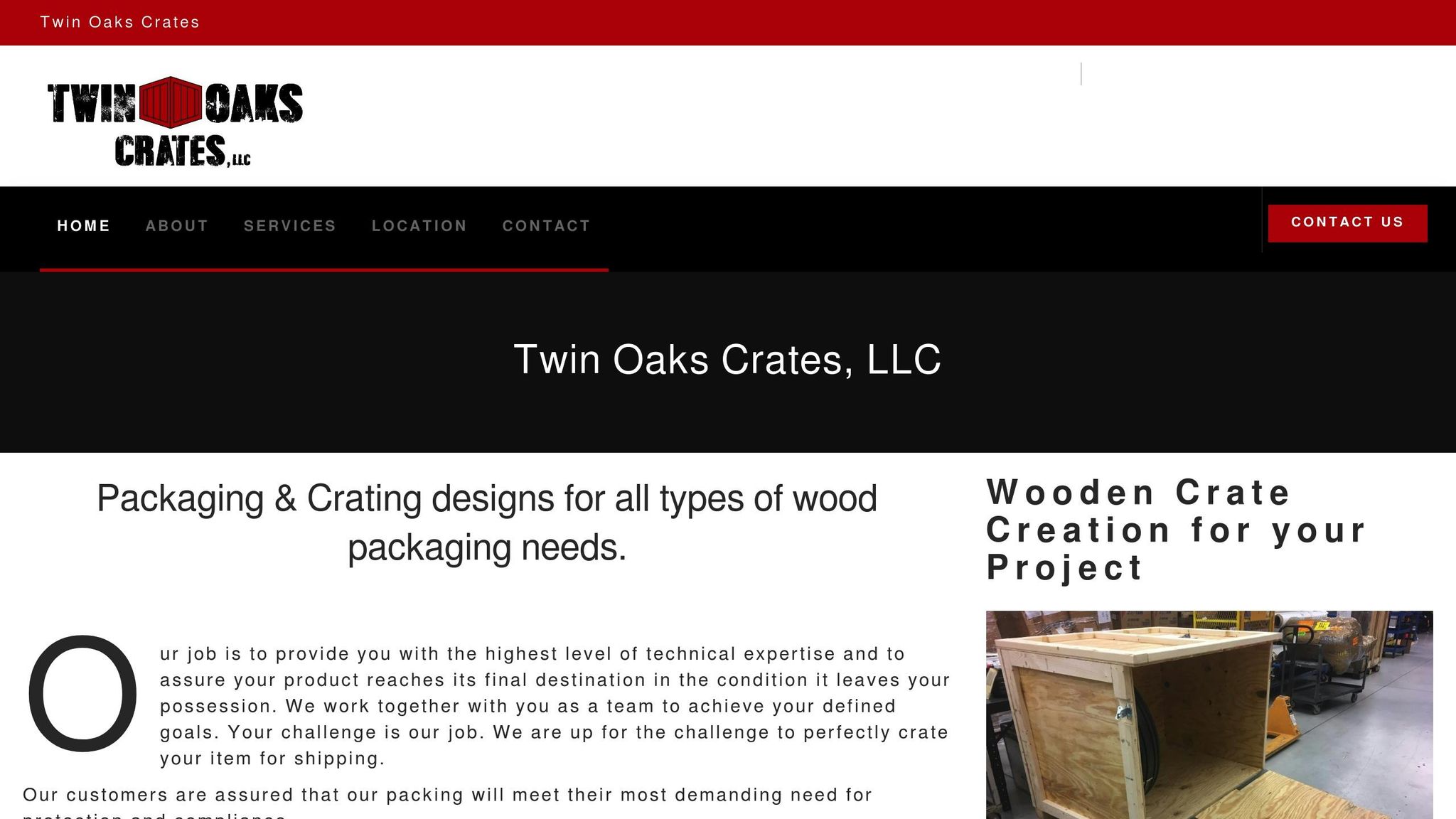
Twin Oak Crates, LLC offers a range of services designed to meet international shipping standards. Their ISPM 15-certified heat treatment services ensure wooden crates are compliant with global regulations. Each treated crate is stamped with the official ISPM 15 mark, simplifying customs clearance and ensuring smooth international shipping.
In addition to heat treatment, Twin Oak Crates, LLC provides custom crate design, on-site packaging, equipment pick-up, and vapor barrier solutions to protect cargo from moisture during transport. These services address both pest control requirements and the need for environmentally responsible shipping solutions, making them a trusted partner for businesses with valuable cargo.
Industry Examples and Recommendations
Different industries have unique shipping needs, many of which make heat treatment the preferred option:
- Manufacturing and Machinery Exports: Heavy equipment manufacturers shipping to multiple countries benefit from heat treatment’s universal compliance. It eliminates the risk of delays caused by varying chemical treatment regulations.
- Electronics and Technology: Heat treatment is ideal for sensitive electronic components. The chemical-free process prevents contamination, and the standardized temperature ensures consistent quality.
- Automotive Parts Suppliers: The global supply chains and strict quality standards in the automotive industry make heat treatment a reliable choice for protecting valuable components during transport.
- Food and Beverage Equipment Manufacturers: Heat treatment aligns with food safety regulations by avoiding chemical residues, reducing contamination risks during equipment installation.
- Pharmaceutical and Medical Device Companies: These industries require chemical-free packaging to meet stringent regulatory standards. Heat treatment also provides thorough documentation, which supports compliance audits.
These examples highlight why heat treatment is often the go-to solution for U.S. businesses shipping internationally. It offers a reliable, environmentally conscious, and regulation-friendly method for protecting cargo during transport.
Conclusion
After weighing the options, it’s clear that heat treatment stands out as the top choice for treating wooden crates. When comparing heat treatment to chemical methods, particularly methyl bromide fumigation, the benefits of heat treatment are hard to ignore – especially when it comes to compliance, safety, and shipping efficiency.
Since 2015, heat treatment has been the go-to method approved under ISPM 15 for most applications. Meanwhile, chemical treatments like methyl bromide fumigation have faced bans and strict regulations in many countries due to their negative effects on both human health and the environment. This makes relying on chemical methods a risky choice for businesses involved in international trade.
Beyond compliance, heat treatment offers additional advantages in terms of worker safety and product protection. As a chemical-free process, it meets ISPM 15 standards without leaving behind residues that could harm sensitive products. Industries like food, pharmaceuticals, electronics, and medical equipment particularly benefit from the purity heat treatment provides, ensuring their products remain safe and uncompromised.
Another major advantage is the global acceptance of heat-treated crates. Marked with ISPM 15 certification, these crates breeze through customs, avoiding the risks of quarantine or regulatory delays that non-compliant materials often face. For companies shipping goods internationally, this reliability translates to fewer disruptions and smoother operations.
FAQs
What are the environmental impacts of using methyl bromide for treating wooden crates?
Using methyl bromide to chemically treat wooden crates comes with serious environmental and health concerns. One major issue is its role in depleting the ozone layer, which allows more harmful ultraviolet rays to reach the Earth’s surface. This not only harms ecosystems but also raises health risks for humans, such as skin cancer and other UV-related conditions.
On top of that, methyl bromide is extremely toxic. Exposure can result in severe respiratory issues and neurological damage, posing a threat to both humans and wildlife. Its quick release into the atmosphere further contributes to air pollution, making it a problematic and less environmentally friendly choice for treating crates.
What are the long-term benefits of heat treatment compared to its upfront cost for shipping sensitive goods?
While the initial cost of heat-treating wooden crates may seem higher, the benefits it brings over time make it a smart investment. This process ensures that the crates meet international shipping standards like ISPM 15, minimizes the risk of pest infestations, and eliminates the need for chemical treatments – making it a safer and more eco-conscious option.
These advantages can lead to significant savings in the long run by helping avoid shipping delays, protecting goods from damage, and steering clear of costly regulatory penalties. For businesses focused on safety and adhering to strict shipping standards, heat-treated crates offer a reliable and efficient way to safeguard valuable cargo during transit.
What should I consider when choosing between heat treatment and chemical treatment for wooden crates in international shipping?
When choosing between heat treatment and chemical treatment for wooden crates in international shipping, several factors come into play:
- Meeting Standards: Heat treatment complies with ISPM 15 regulations by heating wood to a core temperature of 133°F for at least 30 minutes. This makes it a reliable choice for international shipping requirements.
- Eco-Friendliness: Heat treatment avoids the use of chemicals, making it a safer option for the environment and industries like food and pharmaceuticals.
- Strength and Protection: By enhancing the wood’s resistance to pests and moisture, heat treatment ensures crates remain durable and reliable throughout their journey.
- Costs and Practicality: Although the upfront cost of heat treatment might be higher, its long-term benefits – especially for industries with strict safety requirements – often make it a worthwhile investment.
Your decision will ultimately depend on factors like budget, shipping priorities, and environmental considerations. However, heat treatment is frequently preferred for its reliability and eco-conscious attributes.
